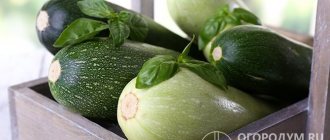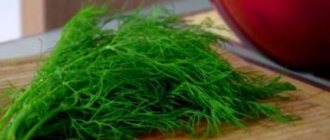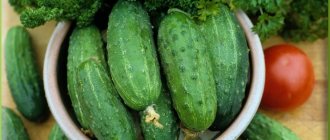Radish is a storehouse of vitamins and minerals. It is recommended to use it throughout the year, especially in winter and spring during the period of vitamin deficiency. It is also a very tasty vegetable from which you can prepare many different dishes. And the medicinal properties of the root vegetable are legendary: it treats colds and greatly improves the immune system. Conclusion - this product should be used regularly and all year round. Unfortunately, it is not always possible to preserve vegetables. But we have prepared for you several rules on how to store radishes in the winter in a house or apartment correctly.
- Radish varieties for winter storage
- Preparing root vegetables for winter storage
- How to store radishes at home
- Where and how to store radishes
- Radish diseases during home storage
- Is it possible to freeze radishes?
- Storage recommendations
Photo: Storing radishes in winter
What tools and materials will be needed
In order to preserve the radish harvest, first of all, choose and prepare the premises correctly. It maintains the correct microclimate throughout the cold season of the year.
At the same time, you cannot do without a number of devices that will significantly facilitate the task of preserving the harvest of root crops. The gardener will need:
- wooden boxes;
- wooden boards for creating storage bins in the basement;
- nails for them;
- dry sand;
- plastic bags for storage in the refrigerator.
As is easy to see from this list, storing this vegetable is not expensive using any of the chosen methods.
If there is no cellar
If you don’t have a cellar, you can store radishes in your apartment:
- in loosely closed plastic bags in the refrigerator;
- on the balcony in boxes, sprinkled with sand and covered with a blanket.
An important condition is that temperature and humidity should not change sharply.
Note to the hostess
If the radish has already been peeled, but there is no need to use it, wrap it in a plastic bag and put it in the refrigerator - this will keep it for 5-7 days.
Collection and preparation
If you plan to store the radish in winter, then start harvesting later. This is the only way the fruit will have time to ripen and be preserved until the next harvest. On the other hand, the root vegetable cannot be overripe, otherwise its taste will deteriorate and it will become tough and “woody.”
It is important to remember that this vegetable does not tolerate frost, so monitor the weather forecast very carefully. They are trying to get the harvest done before any significant frost hits that can penetrate the ground. If the root crop freezes, it will quickly begin to rot.
After all the radishes have been dug up, they are carefully sorted. They get rid of all sick, too small and immature specimens. They won't survive the winter. Such fruits are eaten immediately.
In order to identify fruits that are not suitable for storage, they are often placed in a special hole, covered with 20 centimeters of soil on top. They are stored in similar conditions for up to two weeks.
When cutting off the tops, try not to injure the root crop, otherwise this will lead to its infection and subsequent rotting.
First actions
Before you send the radish for storage, it must be properly prepared.
- After harvesting the root crops, trim the tops, leaving a “stump” of about 2 cm, remove the hanging roots (do not touch the central one).
- Gently shake off the remaining soil from the fruits and, if necessary, wipe with a soft, dry cloth. In the process, you must try not to damage the peel, otherwise any scratch will lead to rapid rotting.
- Proceed with primary sorting - remove rotten and heavily damaged units.
- In a shaded, well-ventilated place, for example, under a canopy, lay out the selected vegetables to dry so that they do not come into contact with each other. This step should not be skipped; black radish, like other root vegetables, quickly deteriorates even with low humidity.
You cannot wash radishes before storing them; their shelf life will be reduced significantly. After washing, even with good drying, mold may soon appear on it.
After drying the vegetables, all that remains is to sort them out again. It is recommended to use small and damaged ones first, since they cannot be stored. Only large, whole, elastic fruits should be left.
At what temperature should it be stored and for how long?
This vegetable is stored in a cool place. Only comfortable conditions ensure the safety of the crop for a long time.
The ideal temperature is one that, although consistently above zero (so that the root crops do not freeze), does not exceed 3 degrees Celsius. If you can reach this temperature in combination with a humidity of about 80-85%, then the radish will retain its attractive appearance and nutritional qualities for at least six months.
Secrets of agricultural technology
Successful storage of radish in winter at home begins with timely sowing of seeds and proper agricultural technology.
- Planting of summer varieties with poor keeping quality begins in the first ten days of May.
- Winter ones are sown in June-July. If you plant them earlier, the plant may go into the trunk and bloom, and the root crop may become coarse.
To get healthy vegetables that can last for a long time, care for them correctly:
- Do not thicken the crops, otherwise you will end up with coarse, insipid, deformed root crops.
- Do not grow radishes after their “relatives” - cruciferous vegetables.
- Dig the soil to the depth of a spade bayonet, add humus.
- Moisten the soil well before sowing.
- Do not allow the formation of a soil crust - loosen the soil.
Tip of the day
If the soil is mulched with peat, a soil crust will not appear.
Storing for the winter at home
When choosing between different ways to store radishes collected for the winter, many opt for home storage. This is due to the fact that this is the most economical method. It does not require searching or renting special premises. Moreover, the costs of the latter option would only be recouped if commercial sales of the harvest were planned.
There are various ways to store winter radishes at home. But most often in private homes they resort to using cellars and basements for these purposes.
Cellar storage
For winter storage of harvested vegetables, the most optimal conditions will help create a cellar or basement. This is one of the main reasons for the particular popularity of this method.
See also
Timing for planting daikon in open ground, care and methods of cultivation, and then planting
Read
In order for the harvest to last longer, it is important to comply with certain safety standards in the cellar:
- there should be no mice or other rodents there;
- groundwater should not be too close;
- there should be no mold on the walls.
The absence of rodents is a very important parameter. If they are still there, then as part of the measures to prepare the room for storing radishes, you need to get rid of them. Otherwise they will eat the entire harvest.
The presence of fungi and mold on the walls, in turn, indicates excessively high humidity in the cellar. This leads to the development of rot in root crops. To prevent this outcome, the room is dried with heaters and well ventilated. The walls are treated with antifungal mixtures.
The technology for storing vegetables in the basement is quite simple. Cleaned of tops and soil, dried root vegetables are placed in wooden barrels or boxes, alternately with sand. First, fruits are placed on the bottom, then they are covered with completely dry sand, and the next layer of vegetables is placed on top, and so on until the container is filled.
Another storage option in a cellar or basement involves the construction of special bins from wooden boards. Their sides should be up to a meter high. Ventilation holes are required.
In the apartment - in the refrigerator or freezer
One of the best ways to preserve a radish harvest for city apartment dwellers is to freeze it in the freezer or store it on the refrigerator shelf.
It is believed that freezing is not suitable for all types and varieties of radish. As a result of this procedure, many of them lose some of their taste. The fruits become too soft. It is worth freezing either the hardest varieties, or those radishes that are planned to be used for therapeutic and prophylactic purposes. In the second case, the root vegetable is grated and placed in a container for storage. Thus, it remains usable for at least a year.
Storing root vegetables in the refrigerator, at temperatures no higher than 4 degrees, is suitable for almost all varieties of this vegetable. Although some of them in this case remain suitable for no more than one and a half months from the date of harvest. Daikon is one of these short-lived types of vegetables.
To preserve the harvest in this way, several root vegetables are placed in plastic bags, which are tightly closed and very small holes are made in them for ventilation. Such a package just needs to be placed on one of the shelves of the refrigerator compartment. The condition of the vegetable is regularly checked and, at the slightest sign of spoilage, thrown away.
On the balcony
Storing on the balcony is another successful way to preserve radishes in apartment conditions. True, for this you need to:
- the balcony was glazed;
- the temperature there did not drop below zero in winter.
See also
The benefits and harms of Daikon radish for the human body, medicinal properties and contraindications
Read
Most modern city residents are able to provide such conditions. The glazing of the balcony is important not only because it is better able to maintain the temperature, but also because then the root crops are not exposed to precipitation.
On the balcony, radishes are stored in boxes, as in the cellar. That is, they alternate root vegetables with dry sand in layers. If it gets too cold outside and there is a real danger of the temperature on the balcony dropping to critical levels, the boxes are covered with blankets.
How to sow?
This variety is early ripening. It is very important to collect fruits in a timely manner. If this is not done on time, the crop will begin to dry out, lose its taste and all its beneficial properties. Sowing must also be done in a timely manner; it is recommended to prepare the soil beforehand. This should be done after July 15 or after April 20. It is important to know when to harvest. The best time is before the onset of cold weather.
Tip: If sowing is done too early, the radish will begin to bloom and lose its beneficial properties and rich taste. The same can happen if the temperature drops or rises.
The process of preparing the soil includes digging holes. The distance between them should be no more than 20 cm. From 2 to 4 seeds can be planted in each of them. After germination, all weak sprouts should be removed, leaving only the strongest and healthiest. Strong sprouts can be easily identified by the color of the root - it should be green.
Before planting, the beds must be dug up. This is done in early spring or before the onset of frost. In this case, the soil is fertilized with rotted manure. Young sprouts are usually sprinkled with ash to protect them from diseases and pests. If the question arises when to harvest radish fruits for the winter, it is better to do it in late autumn .
Conservation
Radishes are also preserved for the winter using canning. To do this, it is pickled and sealed in sterilized jars with other root vegetables (for example, carrots).
The easiest way to preserve it looks like this:
- First, the radishes are washed and peeled.
- Then it is grated or finely chopped.
- Banks are sterilized.
- Place one or two cloves of garlic on the bottom.
- Pour a teaspoon of table vinegar.
- Pour out the radishes.
- Add other ingredients (greens, carrots).
- A teaspoon of salt and sugar.
- Fill the jar completely with boiling water.
- Place it in a saucepan with moderately boiling water and cover with a lid.
This vitamin salad is a good addition to the winter menu. Radishes are also fermented.
Radish with honey
Since ancient times, radish infused with honey for 24 hours has been used as a cure for bronchitis. There are different ways to obtain a healing agent:
- A cavity is cut out of the root vegetable, after which honey (1 tbsp) is placed in it and infused for 24 hours.
- The peeled root vegetable is crushed with a grater, the juice is squeezed out of the resulting mass and mixed with two tablespoons of honey.
- The peeled vegetable is cut into small cubes, placed in a container of a suitable size and poured with honey.
How long can you store radishes with honey? The finished mixture retains its healing properties for no longer than 3 days. It definitely needs to be kept on the refrigerator shelf.
Features of storage of different varieties
The prevalence of different varieties of radish has led to the fact that gardeners do not always know how to preserve this or that variety of the vegetable they grow. The differences in radish storage are minimal, but they are still present. In particular, the periods for which the crop can be preserved vary.
Thus, Margelan green and black radishes are stored the longest. Under the most favorable conditions, it lasts up to a year. At the same time, white Japanese radish (aka daikon) usually remains edible for no more than two months. Although, in some cases, the preservation period is extended twice.
Summer
Unfortunately, it will be possible to preserve black radish of summer varieties in winter for no more than a month. Therefore, it makes no sense to place it in special containers in the cellar - an ordinary refrigerator will suffice.
Autumn
Autumn varieties of radish are stored in almost the same way as winter varieties. But, first of all, they are grown for consumption during the autumn and the first half of winter. Therefore, they can be stored in the refrigerator. This radish is also perfect for canning.
If the harvest of autumn root crops turns out to be large, then it is placed in the cellar or on the balcony. But they are stored separately from the pre-winter harvest.
Winter
Winter varieties got their name from the time of year in which they are intended for storage and consumption. All varieties of this vegetable grown in Russia are winter.
Regardless of the variety and variety, the principles for storing winter radishes correspond to those described in the previous sections. But it’s worth considering that not all of them are stored for the same amount of time, even under ideal conditions. Thus, the shelf life of daikon rarely exceeds 5 months, while black winter radish can last in a cool, well-ventilated cellar for up to 9 months.
Main varieties
The method and period of storage depends on the variety.
Daikon
Daikon is a white radish. This variety is considered the most popular due to its low maintenance requirements and excellent taste characteristics. Just one hundred grams of the product contains the daily requirement of vitamin C. Therefore, you can easily replenish it with the help of one vegetable.
Black
Black radish is called monastic radish. It is also quite good in taste, aroma, and can be stored for quite a long time.
Green
Green radish has a pleasant taste, but its pulp, unlike daikon and black, is softer and juicier.
Chinese
Chinese radishes come in a variety of colors. You can grow lilac, red, pink or green in your own garden, and no difficulties will arise. Chinese has a pleasant structure, density, and great juiciness.











